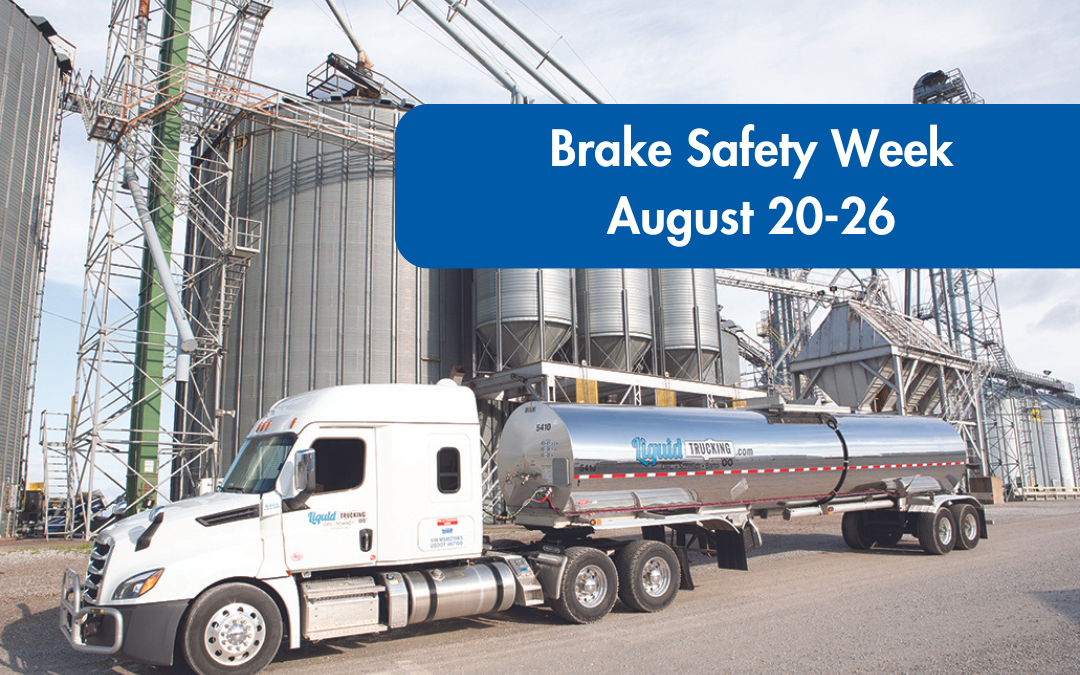Brake systems are the unsung heroes of commercial motor vehicles, ensuring safe travels on our roadways. To emphasize their significance, commercial motor vehicle inspectors conduct comprehensive inspections during Brake Safety Week. This year, BrakeSafety Week is August 20-26 and the focus is on brake lining and pad conditions, as any issues in these components can lead to vehicle violations and potentially affect a motor carrier’s safety rating. In this blog, we’ll explore 10 Essential Tips from commercial motor vehicle inspectors to help ensure your brake linings and pads are in optimal condition during roadside inspections.
1 – Incorporate Brake Inspections into Pre- and Post-Trip Checks
Make it a habit to inspect visible portions of the brake lining and pads as part of your pre- and post-trip inspections. A proactive approach can help identify potential issues before they become safety hazards on the road.
2 – Watch for Signs of Missing Lining
During inspections, keep an eye out for grooves in the drum from rivet contact, as they may indicate missing lining. Addressing such concerns promptly ensures your brake system remains effective.
3 – Verify Shoe-to-Drum Clearance
Check the shoe-to-drum clearance and ensure there is adequate lining on the shoe. Proper clearance ensures efficient braking performance and reduces wear on the braking components.
4 – Check for Leaks and Contamination
Inspect for signs of leaks from the hub or other components that might contaminate the lining or pad surface. Addressing leaks promptly prevents potential damage and maintains optimal braking efficiency.
5 – Ensure No Missing Lining Blocks
Missing lining blocks can compromise the brake system’s integrity. Ensure all lining blocks are present and secure, and replace any missing ones immediately.
6 – Look for Cracks or Voids
Examine the lining block for visible cracks or voids. Damaged lining blocks can lead to uneven braking and reduced stopping power.
7 – Address Loose Rivets or Lining Blocks
Examine the brake shoe for any exposed rivets or loose lining blocks. Secure any loose components promptly to prevent further damage and potential out-of-service violations.
8 – Pay Attention to Disc Brakes
If your vehicle is equipped with disc brakes, pay special attention to the condition of the rotor. Heavy rusting or metal-to-metal contact across the friction surface can impair braking performance and require immediate attention.
9 – Follow Manufacturer’s Requirements and Guidelines
When making brake system repairs, ensure all actions align with the brake manufacturer’s requirements and guidelines. This guarantees that repairs are performed correctly and safely.
10 – Report Issues and Perform Repairs
Incorporate any brake lining and pad issues you notice during inspections into your driver vehicle inspection reports. Report them to the motor carrier promptly, and ensure that the defective linings and pads are repaired by qualified professionals.
Brake Safety Week serves as a timely reminder of the critical role brake systems play in maintaining road safety for commercial motor vehicles. By implementing the ten tips provided by commercial motor vehicle inspectors, you can ensure your brake linings and pads are in optimal condition, enhancing overall vehicle safety and performance. Review the On-Spot bracket / Slack adjuster inspection procedure. Remember, regular inspections and timely repairs are essential to keeping our roadways safe for everyone. Stay proactive and prioritize brake system maintenance to enjoy safe and worry-free travels on our highways. For more safety information visit Liquidtrucking.com
